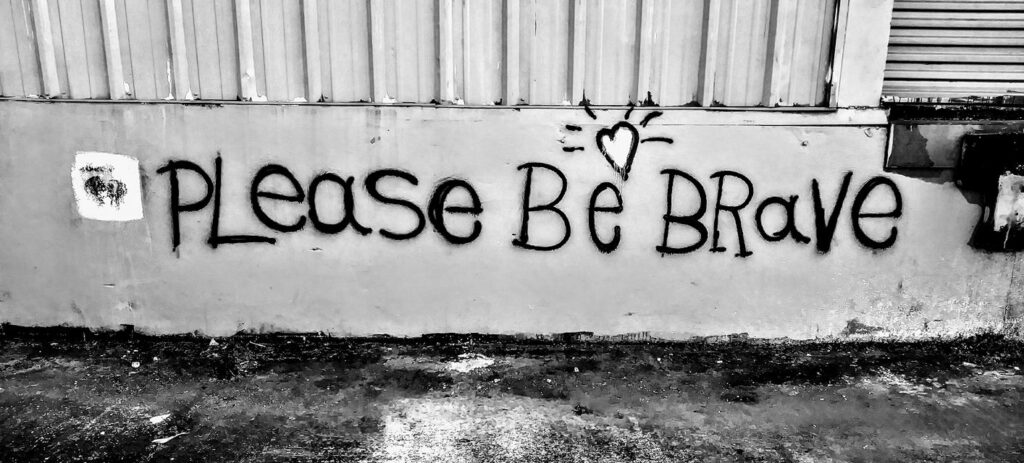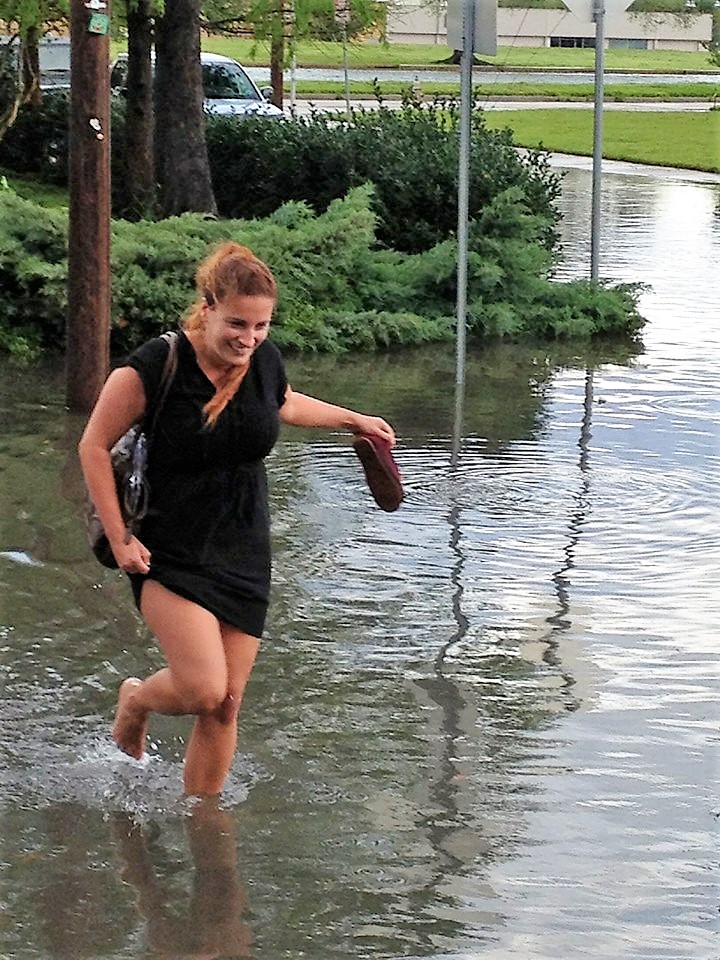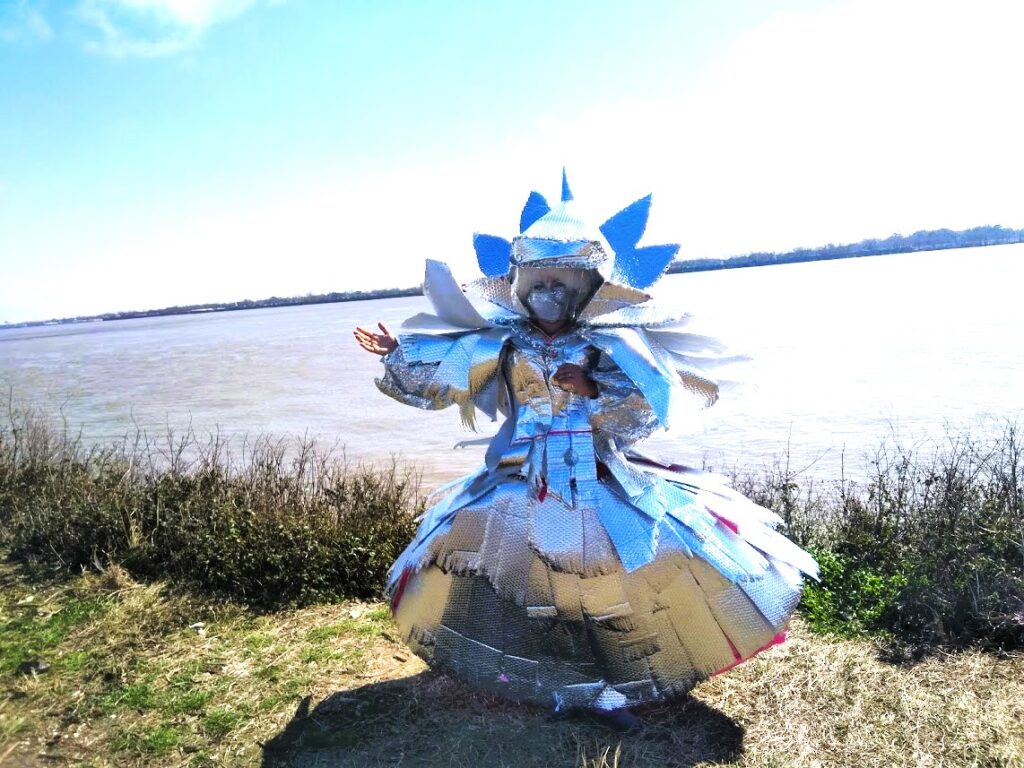Tara Tolford
SHOULD I STAY OR SHOULD I GO?
Tara Tolford
Should I stay or should I go?
When the levees failed for Hurricanes Katrina and Rita in the summer of 2005, New Orleans became the first large city in the United States to have its existence and future openly questioned by national politicians, armchair “experts,” even on the cover of National Geographic magazine. In the eighteen years since those devastating storms, the global number of climate-fueled disasters exploded, and millions now share New Orleans’ existential dilemma. Today, the question has shifted from “Why do you live there?” to “Where can we go now?” In this very personal piece, Tara Tolford, an urban and land use planner at Adaptation Strategies®, shares how she processes one of the toughest questions faced by the growing number of us in harm’s way.
Click to view images larger.
I came to New Orleans 20 years ago and recognized it immediately as home. I’ve always understood it to be a place with a complicated relationship with time: simultaneously ageless and pulsingly alive with three centuries of overlaid and interlocking histories, yet also ephemeral and fragile, doomed, even. I’ve long mused that living here is an act of data-defiant optimism, that signing a 30-year mortgage is really an absurd thing even to be allowed to do, and that if nothing else, we’d have the privilege —and responsibility—of documenting the city’s last decades, on behalf of those who cannot stay themselves, and for everyone who loved this land but whose clock ran out.
Every event here, personal or political, adjusts the “should I stay or should I go now” countdown timer. The election of a Democratic governor and the subsequent development of a climate action plan turned the clock back a bit. Hurricanes Ida and Ian—and the resulting implosion of the homeowner’s insurance market in the region, twisted the clock sharply forward. And every year the chaotic joy of Mardi Gras and other cultural rituals pauses the clock entirely. How could I dream of living anywhere else? But now a summer of unrelenting, record-obliterating heat amplifies the ticking to migraine-inducing intensity: how much longer can anyone live here? Personal circumstance weighs heavily. It’s hard to get old, raise kids, and be poor in places that demand so much individual resilience, adaptation, and coping—yet offer so little tangible, structural community support in return.

But I see a path forward to stay. Personally and for the broader community, it is possible to adapt and thrive, even under conditions that seem hostile and terrifying today. It will take tough tradeoffs, an ability to let go of systems and assumptions that no longer serve us, and a collective and political will that I’m not entirely convinced we can ever summon. It won’t be workable for everyone, and there are terrible risks—not just physical threats to people and environments but existential threats to the ineffable connective tissue of culture and place. Most especially, there is the risk of continuing and worsening harm to those most vulnerable, who are left with fewer and fewer choices, as those with means move on or invest in “hardening” their homes, cities, and selves against impacts.
Importantly, few of the threats we face in this place are unique, and variations on our themes are playing out nationally and globally. On the one hand, that means our ongoing disasters face ever greater competition for attention, and the safety net has more holes than rope. On the other hand, we’re not in this mess alone, and opportunities for mutual aid go well beyond the material. As a conscientious citizen and planner, there’s much work to be done, from fortifying my too-old-to-insure roof to dismantling century-old policy frameworks that no longer work for us–and maybe never did.
My soul connects to the cultural quilt that is New Orleans; my heart beats with the rhythms of this city, and my brain wants this to last at least as long as I do. So, for now, I choose to stay


Tara Tolford
Writer
Tara is a New Orleans-based land use and transportation planner, researcher, and teacher with over a decade of urban and regional planning, policy, and design experience. She focuses on protecting and making better use of public space to achieve multiple goals, including adapting to climate change and making places safer, more comfortable, and more fun for all creatures— people included. When not working on better-built environments, she can often be found building her next carnival costume, feeding feral chickens, or hanging out near (or in) water. She humbly thanks The Clash and apologizes for the earworm.
After more than a decade of advocacy focused on recovery, restoration, and integrated water management, the founders of Adaptation Strategies® (AS) realized that the word “restoration” was an inaccurate way to approach Louisiana’s troubling future and that adaptation is the more realistic and necessary perspective. In 2016, AS was established as a systems-oriented consultancy that fosters environmental, social, and economic adaptation in a rapidly changing world. Today, AS team members’ lives reflect the complex challenges of adaptation as they are now spread across Louisiana and the country, seeking higher ground and responding to the pull of opportunities and responsibilities to share expertise beyond the state’s boundaries. In future TDQ issues, the AS team will explore questions (personal and political) related to climate adaptation and how to plan for places that support human and ecological well-being.

Photos by Tara Tolford
ABA Advantage
Suhani Patel
Should I stay or should I go?
Tara Tolford
The Need for Energy Diversification
Wendy Nystrom

















































